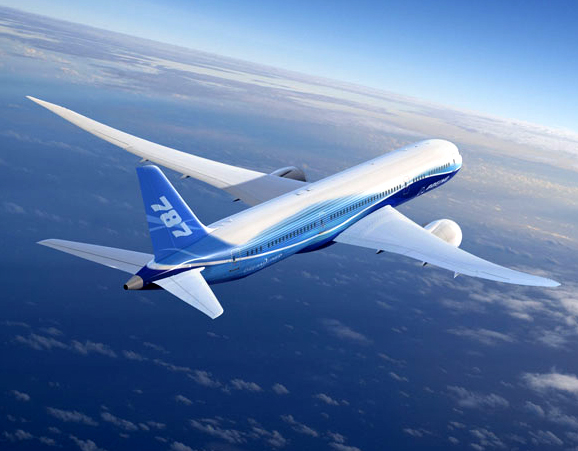Thirty-five electro-mechanical actuators and control valves made by West aerospace firm Claverham helped make possible today’s maiden commercial flight by Boeing's 787 Dreamliner – albeit three years later than planned.
Claverham, based in the North Somerset village of the same name, was selected by US giant Boeing more than five years ago to be part of its UK team working on the 787. Other UK contributors include engine maker Rolls-Royce’s Derby plant, Messier-Dowty in Gloucester and General Electric in Cheltenham.
Engineers from Claverham have been working as part of Boeing’s team to produce the sophisticated environmental control system of the Boeing 787. At the peak of the programme Claverham, a world leader in actuation technology, will produce more than 3,000 unit components a year. Boeing expects to deliver up to 2,500 Dreamliners over the next 25 years.
The Dreamliner project is Boeing’s largest in the UK – on variants powered by Rolls-Royce engines, 25% of the aircraft by value will be made in the UK.
Claverham, which was acquired 10 years ago by Hamilton Sundstrand – a subsidiary of US group United Technologies Corporation – is also a major supplier of parts for helicopters and defence equipment.
For today’s four hour, eight minute maiden commercial flight between Tokyo and Hong Kong All Nippon Airlines (ANA) auctioned six business-class seats on the special charter flight from Tokyo to Hong Kong with one selling for $34,000 (£21,200) – around 13 times the price of a regular business-class ticket between the two Asian hubs.
The winner, Gino Bertuccio, won because he accidentally added an extra digit onto his bid – but he was happy regardless. “Just thinking I'm going to be part of aviation history is a dream,” he told the Wall Street Journal.
In all, there were 100 passengers aboard the 250-seater Dreamliner, which was originally scheduled for delivery in 2008. The twin-aisle, mid-size plane features the industry’s largest windows, with higher cabin humidity and cleaner air – all of which combine to allow passengers to arrive at their destinations more refreshed.
But its commercial debut was delayed by a string of technical setbacks. The latest was an on-board fire during test flights in January.
Crucially, the 787 powered by Rolls-Royce engines, delivers fuel savings of 20% thanks to its lightweight composite structure. But delays have allowed Airbus’ rival A350XWB – whose wings are designed and part-built in Bristol – to narrow Boeing’s lead in the marketplace.
However Scott Francher, Boeing’s head of the 787 programme, said in Tokyo ahead of today’s flight that the company is comfortable with production targets and hopes to build 10 a month by 2013.
The aircraft’s success or failure will depend much on Japan, the only major aviation market where Boeing clearly dominates Airbus. More than a third of the Dreamliner is built by Japanese companies, including Mitsubishi Heavy Industries, Kawasaki Heavy Industries and Fuji Heavy Industries. Nearly a 10th of Boeing’s backlog of 821 orders are from Japan.
ANA expects its 55 aircraft to be fully operational by March 2018 and has so far stuck with Boeing despite three years of delays. However, earlier this month China Eastern Airlines cancelled an order for 24 Dreamliners rather than wait for production to pick up speed while Air New Zealand is seeking compensation for production delays to its order.































